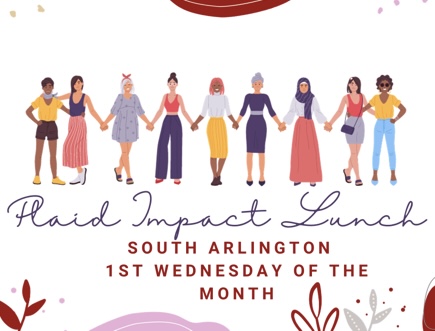 Dr. Slonim. Give us a little personal background. Where were you born?
Dr. Slonim. Give us a little personal background. Where were you born?
I was born and raised in Miami, Florida. I stayed until I went to college. Although I haven’t lived in Florida since then, I plan to spend a lot of time there when I retire. I visit my mom often.
Do you have siblings?
I have one older brother.
What was your childhood like?
I spent a lot of time outside, swimming and playing with the neighborhood kids. I took piano lessons (which I hated) and guitar lessons (which I loved). I played flute in the school band. I also spent an awful lot of time studying.
Did you know early on that you wanted a career in medicine?
I knew by the time I was five years old that I wanted to be a doctor. You might think this was the only choice for someone whose parents are both doctors, but my brother is an electrical engineer.
Where did you go to school?
I went to college at Duke in North Carolina. From there I went to medical school in DC at George Washington University. I did my Internal Medicine internship at UCLA in the San Fernando Valley Program. My residency in Radiology was in Boston at the Lahey Clinic. The final part of my training, my fellowship in Interventional Radiology, was at Stanford University in Northern California. All told, I did 10 years of training after college.
Why did you choose to specialize in interventional radiology?
When I was in medical school, I planned to be a surgeon. At one point, all the surgery residents were complaining about how Interventional Radiology was taking over their field. I decided to check it out and realized it was the way of the future. I withdrew all my surgery applications and applied in radiology.
Talk about how minimally invasive surgical procedures have impacted patient options and outcomes.
For many people, minimally invasive procedures are the only option. They made be too sick for surgery or having problem that medicines can’t fix. Other patients have the choice to have an open surgery or one that’s less invasive. In most cases, the less invasive procedure has an easier recovery and lower cost.
Who is your patient demographic?
Well in my practice, I focus on two types of patients. I treat women with uterine fibroids who don’t want a hysterectomy. I also treat overweight patients who don’t want bariatric surgery. The fibroid patients are typically African American women between the ages of 35 and 55. Eighty percent of black women get fibroids. For the Hunger Block procedure, there is no specific demographic except that it’s for patients with a BMI between 30 and 45.
What services do you offer?
I offer Uterine Fibroid Embolization (UFE) and the Hunger Block procedure. My partners in Precision Vascular & Interventional offer other vascular treatments, including for varicose veins, blocked arteries in the legs, varicose veins around the ovaries causing chronic pelvic pain, varicose veins in the scrotum causing pain and infertility. We probably will soon start offering a non-surgical vascular treatment for benign prostatic hypertrophy.
How has medicine changed in the years since you came out of school?
The technology has exploded. When I came out of school, we had to look up our patients’ lab results on hand-written index cards in a wooden box in the lab. Now there are tools that let us see into the body in ways I couldn’t imagine when I was in school. There was no such thing as an MRI back then. Many of the instruments I use had not been invented yet. One of the procedures we do is to place a filter in the vein to trap blood clots. When I came out of training, the filter was passed through a tube the size of a pencil. Now we pass it through a tube not much bigger than a piece of spaghetti. That lets us make a much smaller hole in the vein. Not to mention that now there are robots that help surgeons operate without making a huge incision.
What differentiates your practice from others?
Most Interventional Radiologists practice in a hospital. Our practice is primarily in our office, which is much more comfortable for our patients. We have all the equipment we need to maintain the highest safety standard, but we can prioritize customer service in a way that is impossible in the hospital.
What do you love most about your work?
I get to help people in their hour of need. I see patients when they’re scared, emotional, and vulnerable. It gives me special pleasure to put them at ease, answer their questions, and treat their medical problem with the highest level of skill. Usually, a patient is very relieved after she sees me. I love that.
If you had not gone into medicine, what other career might you have chosen?
Well the only other option I considered was being Miss America.
Who is a professional hero of yours?
Mike Dake, MD taught me my skills and taught me to believe that I could do anything. Anne Roberts, MD and Jeanne LaBerge, MD were the only women Interventional Radiologists I had heard of when I was in training. I thought all three of them were doing amazing things, and I still do.
 Who is a personal hero of yours?
Who is a personal hero of yours?
My mom is amazing. She’s 86 years old and still practicing medicine. She came to the United States for college, not able to speak English. She has worked hard her entire life, keeping our family together, running her practice, and never stopping in her pursuit of excellence and knowledge.
Besides her, I’d have to say Oprah Winfrey and Tony Robbins.
What is your definition of success?
Loving what you do, helping people while you do it, and making a living at it too.
Please leave us with your favorite quote.
I have two:
The road to success is always under construction. -Lily Tomlin
Never grow a wishbone where a backbone ought to be. -Clementine Paddleford
Dr. Slonim, thank you for your time.
For more information about Dr. Slonim’s practice go to precisionvir.com













She is be inspire for the others women doctors and i hope everybody are follow her in here. To developed our medical sector such kind of women are need so more.